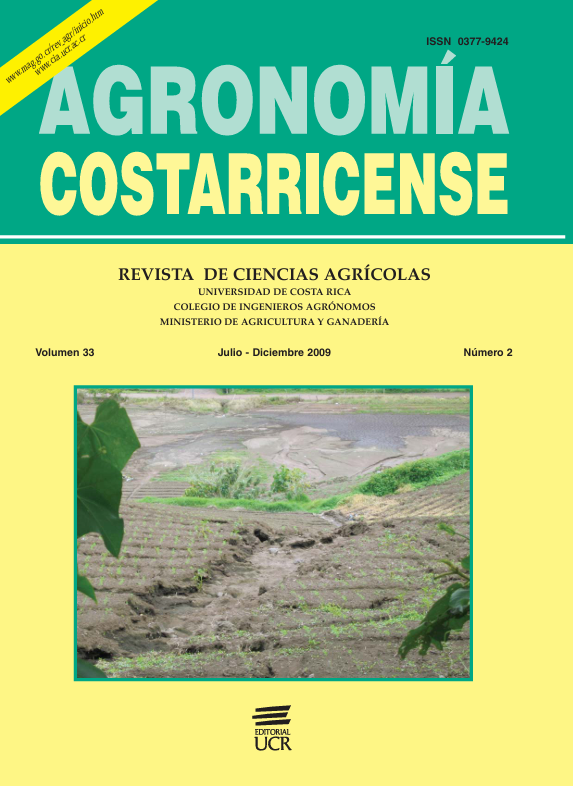Abstract
In order to determine the characteristics and behavior of the cape leaf during bunch development, measurements were carried out in 3 commercial banana plantations in the Caribbean region of Costa Rica. Bending or collapse of the petiole of the cape leaf occurred more often 3 to 4 weeks after flower emergence, and decreased gradually until the beginning of harvest. At least 73-79% of the plants did not show cape leaf bending, while in those cases where bending occurred it felt over the neighboring lower leaves in 5-9%, over the bunch in 11-15%, and on the side of the bunch in 3-5% on the cases. On the average, when the cape leaf bent over the bunch, there was contact in 28-42%, and the rubbing damage due to the contact was observed in only 0-6% of the cases. The contact occurred more frequently with the first or second basal hands, and was caused mainly by the lamina 78-98%. The dimension and foliar area of the cape leaves that remained erectuntil harvest were always greater (p = 0.0001) than those that were bent. The cape leaf showed smaller dimensions (p < 0.0001) than the third positional leaf of the same plant in the 3 regions. The cape leaf showed higher foliar content of P, Ca, S and B (p < 0.0017) and lower of Zn (p = 0.0375) than the third positionalleaf of the same plant. There were no differences (p > 0.1941) in the foliar content of N, K, Fe, Cu, and Mn.
##plugins.facebook.comentarios##

This work is licensed under a Creative Commons Attribution-NonCommercial-NoDerivatives 4.0 International License.
Copyright (c) 2016 Agronomía Costarricense


